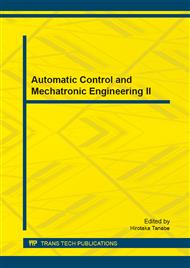p.565
p.569
p.574
p.578
p.582
p.586
p.590
p.597
p.602
Plumpness Analysis of Indicator Diagram for Vehicle Damper
Abstract:
According to the indicator diagram of damper, the indicator diagram plumpness was proposed as a quantitative index, and its mathematical relationships with the sprung mass acceleration, suspension dynamic travel and tire dynamic load were built. Moreover, the influence of the total area on suspension characteristics was analyzed in time domain and frequency domain. The results show that, the increase of the indicator diagram plumpness can effectively restrain the variation of suspension dynamic travel and tire dynamic load, meanwhile, the body acceleration will be enlarged. Excessive indicator diagram plumpness also affects the dynamic tire load distribution in frequency domain, and it will decrease the driving security. Therefore, it should be reasonably selected from the performance indicators, which is based on the requirement of vehicle demand in the design process.
Info:
Periodical:
Pages:
582-585
Citation:
Online since:
September 2013
Authors:
Price:
Сopyright:
© 2013 Trans Tech Publications Ltd. All Rights Reserved
Share:
Citation:


